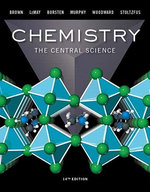?Which of the three-dimensional primitive lattices has a unit cell where none of the internal angles is \(90^{\circ}\)? (a) Orthorhombic,
Chapter 12, Problem 12.25(choose chapter or problem)
Which of the three-dimensional primitive lattices has a unit cell where none of the internal angles is \(90^{\circ}\)?
(a) Orthorhombic,
(b) hexagonal,
(c) rhombohedral,
(d) triclinic,
(e) both rhombohedral and triclinic.
Text Transcription:
90^{\circ}
Unfortunately, we don't have that question answered yet. But you can get it answered in just 5 hours by Logging in or Becoming a subscriber.
Becoming a subscriber
Or look for another answer
